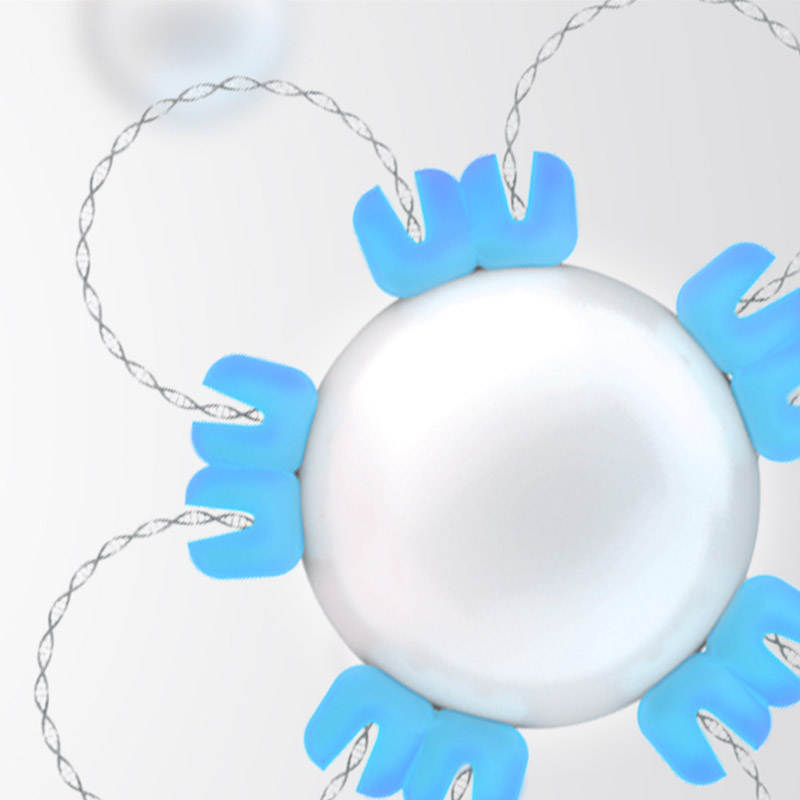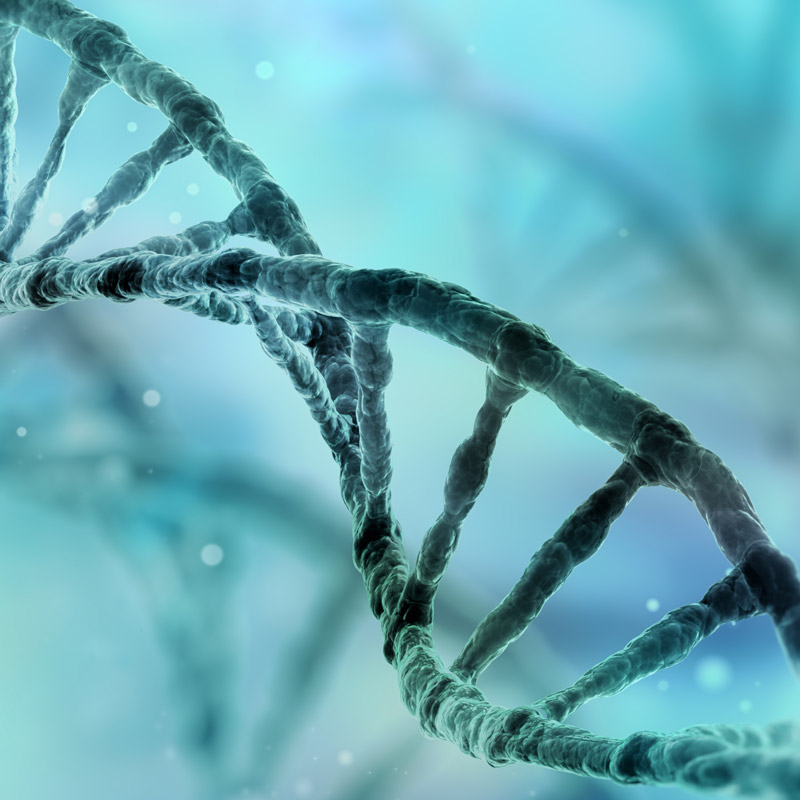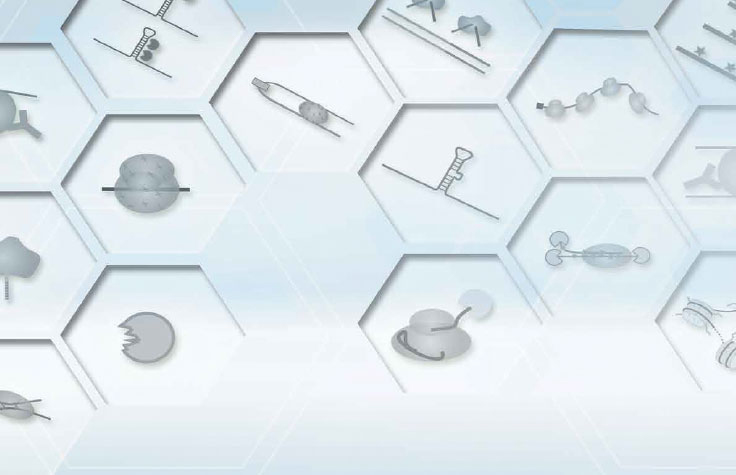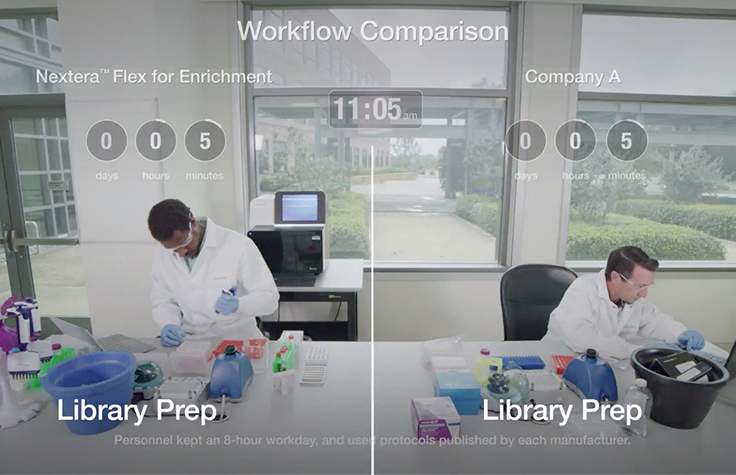DNA Library Preparation
Rapid, Accurate DNA Library Prep
Innovations in PCR-free and on-bead tagmentation technology offer time savings, flexibility, and increased sequencing data performance
Versatile DNA library prep allows you to examine small, targeted regions or the entire genome.

Whole Genome

Whole Genome Low Input
DNA Whole Genome
We’ve combined sample prep and library prep into one easy-to-use product, simplifying the process to create sequence-ready samples. With on-bead fragmentation, no library quantification is needed, which saves you time and increases sequencing data performance by avoiding PCR duplicates.
Simplify Your Workflow with Illumina DNA Prep
Illumina DNA Prep (formerly Nextera DNA Flex) simplifies the upfront DNA fragmentation process and solves other workflow challenges such as DNA extraction, DNA quantification, and library prep QC and library quantification.
Watch Webinar
Enrichment with UMI

Enrichment without UMI
DNA Enrichment
Our enrichment library prep yields provides > 90% on-target reads, > 95% uniformity, and low PCR duplicate rate across all Illumina sequencing systems.1 The workflow uses a single, 90-min hybridization step and as little as 10 ng input DNA. On-bead tagmentation chemistry enables support for a wide range of DNA input amounts, various sample types, and a broad range of applications.
Illumina DNA Prep with Enrichment: Simple, Fast, and Flexible
This video overviews the process of selecting the enrichment panel options, the library prep and enrichment workflow for Illumina DNA Prep with Enrichment (formerly Nextera Flex for Enrichment) and data analysis.
View VideoDNA Amplicon
DNA Amplicon
Ultra-deep sequencing of amplicons allows efficient variant identification and characterization. Accelerated library prep uses reduced-bias PCR and is gel-free, enabling you to prepare high-quality libraries in less than a day. Mechanical DNA fragmentation and adapter ligation.
DNA Library Prep At-a-Glance
| Application | Whole-genome sequencing | Whole-genome sequencing | DNA enrichment - no UMI |
|---|---|---|---|
| Hands-on time | ~45 min | 1-1.5 hrs | ~2 hrs |
| Turnaround time | ~1.5 hrs | ~3-4 hrs | ~6.5 hrs |
| Input | 25 ng to 300 ng | 1 ng to 500 ng | 10 ng to 1000 ng |
| Automation available | Yes | Yes | Yes |
| PCR protocol | No | Yes | Yes |
| Library Quant needed? | No | No | No |
| Fragmentation included? | Yes – on bead | Yes – on bead | Yes – on bead |
| Product | Illumina DNA PCR-Free Prep | Illumina DNA Prep | Illumina DNA Prep with Enrichment |
Choosing a DNA Library Prep Kit for Your Experiment
| Application | Product | Benefits |
|---|---|---|
| For Human DNA WGS | Illumina DNA PCR-Free Prep |
|
| For DNA WGS with low input | Illumina DNA Prep |
|
| For DNA enrichment without UMI | Illumina DNA Prep with Enrichment |
|

The Benefits of Tagmentation
Bead-linked transposome tagmentation is an innovative technology used in our library preparation portfolio. On-bead tagmentation lets you get to sequence-ready libraries faster than before by simultaneously fragmenting the gDNA and adding the Illumina sequencing primers. Normalize your library without ancillary reagents or equipment. Reduce turnaround time and complexity.
Learn More About Tagmentation
Understanding Adapter Ligation
The other key technology used in our NGS library prep is adapter ligation, long known for consistent, high-quality data. Libraries are prepared by fragmenting a gDNA or cDNA sample and ligating specialized adapters to both fragment ends. These adapters contain the full complement of sequencing primer hybridization sites. This eliminates the need for additional PCR steps to add the index tag and index primer sites, making the process fully automatable.
Learn More About Adapter LigationFrequently Purchased Together
Featured DNA Library Prep Applications
Library QC with the MiSeq i100 Series
Assess quality and optimize library pooling before sequencing on high-thoughput systems.
Human WGS with Illumina DNA Prep
Library prep from blood, saliva, or genomic DNA that provides uniform coverage for human whole-genome sequencing (WGS).
Microbial WGS with Illumina DNA Prep
Library prep that provides uniform coverage and improved genome assembly for viruses, bacteria, and other microbial species.
Whole-Exome Sequencing with Illumina DNA Prep with Enrichment
Library preparation and unique dual indexing combined with hybrid capture of exome content.
Tumor Exome Sequencing with Illumina DNA Prep with Enrichment and DRAGEN
Combining exome sequencing with Illumina DNA Prep and the analytical power of DRAGEN enables simplified, efficient, highly accurate variant analysis in FFPE tumor samples.
Ask an expert how you can get the most with Illumina library prep
We'll walk through your needs and make recommendations.
DNA Methods Poster
View illustrated schematics of NGS DNA library preparation techniques and see brief diagrams of Illumina library preparation kit protocols.
View Poster
DNA Methods Review
Try one of these methods or find inspiration to create your own. With a few extra processing steps, a wide range of scientific questions can be addressed.
View PDF
DNA Sequencing Example Workflow for Whole-Genome Sequencing
Library Prep
Illumina DNA PCR-Free Prep
High performance for sensitive applications such as human whole-genome sequencing.
Sequencing
NovaSeq 6000 System
Sequence a tumor-normal pair or germline trio using a single S1 flow cell or up to 48 genomes per run using dual S4 flow cells.
Analysis
Related Solutions
Indexing
Increase the number of samples sequenced per run and optimize high-throughput sequencing using unique dual index adapters.
UMIs
Unique molecular identifiers (UMIs) provide error correction and accuracy and can reduce false-positive variant calls while increasing variant detection sensitivity.
Automation
Our partners have developed both high- and low-throughput walk-away automation methods that span our library prep portfolio.
DNA Sequencing
DNA sequencing can be applied to small, targeted regions or the entire genome through a variety of methods, enabling researchers to investigate and better understand health and disease.
